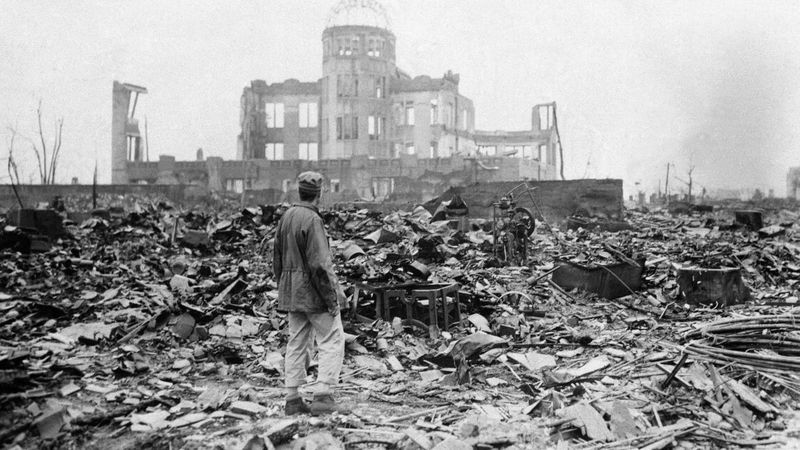
President Obama laid a wreath at the Hiroshima Peace Memorial on Friday. It was a historic visit, the first of a sitting U.S. president to either Hiroshima or Nagasaki since the end of the Pacific War in 1945.
In both Japan and the United States, an emotional controversy had simmered over whether Obama would — or should — apologize for the atomic bombings. For many Americans, his presence alone in Hiroshima symbolized an unwarranted and offensive apology for those unprecedented attacks.
But the atonement debate was beside the point, yet another way for Americans to avert their gaze from the suffering of the people of Hiroshima and Nagasaki. Americans on the whole still deny the other side of the story — what happened beneath the mushroom clouds to the hundreds of thousands who died instantly, and more than 300,000 others who suffered in unimaginable ways from their injuries, burns and whole-body, high-dose radiation exposure.
Seventy-one years later, we still hear in letters to the editor and op-eds by veterans, pundits and everyday citizens that the Japanese started the war by bombing Pearl Harbor, so they deserved what they got. (As the author of a book on Nagasaki after the bombing, I have personally received numerous vitriolic emails and letters to this effect.) We still hear that the atomic bombs ended the war, forced Japan to surrender and saved a million American lives by avoiding a costly Allied invasion. This narrative, filled with partial truths and numerous omissions, was created by U.S. government officials after the war to quell opposition to the use of the atomic bombs.
We continue to oversimplify that history. We do not question the bombs’ role in ending the war, even as historical documentation cannot definitively link the Nagasaki attack to Japan’s decision to surrender. We do not acknowledge that whole cities are not military targets. Of the 74,000 deaths in Nagasaki through the end of 1945, only 150 were military personnel.
Why can we not hold multiple truths at the same time? Yes, Japan attacked Pearl Harbor, committed atrocities against whole cities of civilians in China, tortured and killed Allied POWs, and tenaciously waged a war in the Pacific it could not win. And, the United States and its Allies bombed and incinerated all or part of 64 Japanese cities — cities filled with innocent men, women and children who had no say in their military’s actions — and then waged nuclear war on Hiroshima and Nagasaki.
These facts co-exist. Forcing them into a position of simple causality, however, strips us of the ability to analyze such complex historical events honestly. To say that the Japanese people deserved being burned and irradiated keeps us stuck in a revenge mentality that limits our capacity for self-examination and can only lead to further devastation.
President Obama spoke to some of these co-existing truths at Peace Memorial Park. He held aggressor nations accountable for the war which “grew out of the same base instinct for domination, for conquest, that had caused conflicts among the simplest of tribes.” And he acknowledged — without apologizing — “the terrible force” that was unleashed 71 years ago and the horrific effects on the human beings in Hiroshima and Nagasaki.
Before embracing two aging survivors, Obama said that the souls of those who perished “…ask us to look inward. To take stock of who we are and what we might become.”
Obama demonstrated the kind of response we expect from others, including Japan: a whole-hearted seeing and understanding of the profound harm caused. The United States burned alive more than 180,000 Japanese civilians before Hiroshima and Nagasaki and killed and irradiated hundreds of thousands more in the atomic bombings. Before an apology is even possible to consider, these truths need to be acknowledged as meaningful parts of history — our history.
Nagasaki survivor Yoshida Katsuji — who was 13 years old when his face and body were brutally burned and disfigured in the bombing — says: “The basis of peace is understanding the pain of others.” Every step we take toward such empathy moves us, and our volatile world, closer to the possibility of peace.
Susan Southard is the author of Nagasaki: Life After Nuclear War.
